
On-page SEO Optimization and Image optimization are the basic steps for your SEO campaign. As the Search Engines are getting smarter and more intelligent, the process of achieving a good search ranking is getting more complex.
Now it takes much more than just quality content to get to the top.
There are many factors that contribute to showing up well in search engine rankings, one of the most important of them is on-page optimization. On page, Optimization is the pillar of your SEO and one of the important on-page optimization factors is image optimization.
Image SEO optimization is one of the building blocks of on-page optimization. Images are a strong visual component of a webpage. They say that a ‘Picture is better than a thousand words’.
Read: 4 ways how images enhance your blog Post
If used properly they can transmit your message in just a single glance while a careless use of images can destroy your whole impression. In addition to this, images can be a good source of traffic from Google Image Search and other Image Search engines.
The most important Image Optimization factors include the alt tag, title tag, image size, image name and image linking.
Image optimization for SEO Techniques
1. Image Relevance
Image relevancy is important when it comes to image optimization for SEO. An image of a train on a page related to Ferrari will do you no good. I know its common sense but this step is so important that I just can’t miss it out.
2. Alt Tag
The Alt tag is probably the most important image optimization factor. Alt stands for alternate. The text in the alt tag is displayed in place of the image if the image can not be shown or is taking too long to load.
Most of the major search engines are text-based, i.e they can not read images and videos. The location of your images appears as an empty space to the search engines. These empty spaces are not in any way good for your overall SEO. The alt tag not only tells the search engines that there is an image placed here but also informs it about the topic of your image.
A good practice for the ALT tag is to keep your alt tags short but descriptive.
There are plugins which automatically uses the image name as Alt tag. This is why it is essential that you rename your images before uploading, and give it a meaningful name.
For example, popular RankMath SEO plugin automatically uses image name to add as alt text. This simple feature saves countless hours of time for end users like you, and me.
Alternatively, you can always manually add alt tag to an image.
Here is how to do that in WordPress:
Simply select the image and on the right side, you will be able to add a descriptive alt tag (See screenshot below for understanding)

Simple! Is int it?
Fill your alt tags with search engine friendly information but don’t try to go too far. For example, the alt tag for a picture of a birthday party should be something like this: alt=”my son ronin second birthday party”
3. Image Size and hosting
Image size is a very crucial factor as it directly affects the loading time of the page. There are a few things you can do to ensure your images doesn’t slow down the page:
- Use webp over .jpg
- Use .jpg over .png (This works in most of the case)
- Compress your images before uploading. Use one of the image compression WordPress plugins.
- Using a CDN network will help your image heavy site to load faster in all the parts of the world. Using a CDN has become an essential and I have already published a resource on best CDN for WordPress.
If you are using WordPress, you can use Shortpixel plugin which offers 100 free images optimization every month. You can use it to optimize the image size of already uploaded images. Another reason for using this plugin is, it can convert your existing .png image into .jpeg.
Image hosting is another important factor especially when it comes to driving traffic from Google Image Search. The factors on which the images for Google Image Search are chosen is kept hidden but some say that image hosting is one of the important factors for the choice. It is said that images hosted on the same domain as the text are given more value than the images hosted at another domain like a free image hosting site.
Another important algorithm for Google Image Search is how the images are blended with the text on the page.
4. How to name images for SEO
Just as keywords are important in the URL, the same goes for images.
Keyword-rich file names can help the search engine bots determine relevancy.
Avoid using default image file names like, “DSC0019.jpg” as it does not give much information about the image.
Use descriptive filenames with keywords separated by “-” (hyphen). For example, “Steve-jobs-on-the-launching-of-iphone.jpg”.
5. Title Tag and image linking
Images are eye-catching so are perfect for linking. But proper image linking techniques can offer even better results. One of the basic tips for image linking is to avoid linking your images directly. Always use relevant anchor texts whenever linking your images. This is even more effective for your SEO when embedding images in a guest post or other pages intended to get a link back to your site.
Remember to use a title tag whenever linking your images. Title tag provides a tooltip when you hover your cursor over a link. Use relevant keywords and SEO friendly description and your title tags will rock.
6. How many images should you be using?
There is no fixed number of images that one should be using, as it all depends upon the kind of pages you are creating. For certain kind of pages, even a single image is good enough and in certain scenarios (ex: tutorials), you might be using 10-20 images.
The key point here is, your images should not slow down the loading time of pages. Make sure, your page load within 2-3 second on a 3G connection. Anything more than that, you should focus on optimizing images and over all page/website for the speed.
These are simple tips for SEO image optimization which are not only effective for your SEO but can also boost your traffic. If you are wondering how to get images for your blog, you should read:
- 5 Ways to find stock images online
- Where to find images online
- How to find images for your blog using Flickr advanced search
Do let us know if you do any SEO optimization for your Images on the blog? Or you missing out some nice chunk of traffic from images?

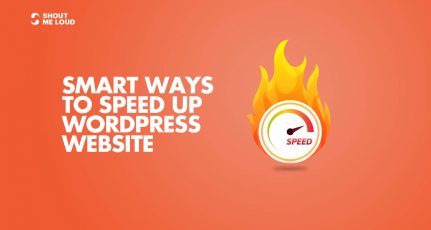
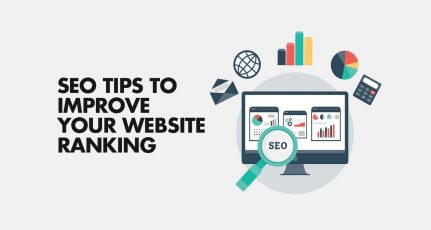
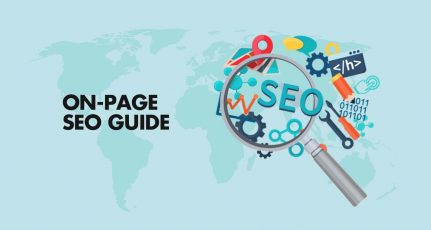
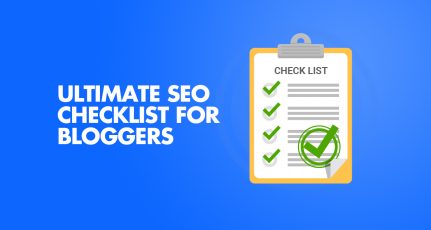
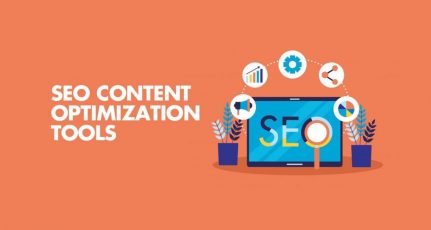
Great!!! I can finally optimize my images without the losing the qualities of the image… Thanks for this article.
Hi Anasshad,
Very insightful article. I have to admit that I do concern myself with the keyword in the image, the image file size and open graph.
These Image SEO tips helps me a lot to find images in a better way. I hope this might be useful for my blog. Thanks dear!!!
I have never optimized image on my blog but after going through this post I will start adding alt tags and title. Actually, I have a technology niche blog where I have added buying guides, so I have added a number of images in all post, so this image optimization will help me a lot to rank.
Now i start image optimization for my blog after reading this blog post, thanks for this awesome article.
Image name and alt tag both are most important. Thanks for sharing this post.
After image compression, I’m able to reduce blog loading speed and I think it’s better for SEO. I use compressor.io suggested by you and it’s working fine for me.
Alt tag and image name plays most important role in image optimisation. Great article…
Hey anasshad,
great article! you have covered everything about image seo. i came across kraken.io which can be used to compress images , hope that adds info to this more informative article. keep up the good work!
Hi, I use lots of images for one of my client in Travel Sector and image optimization matters a lot of me. As Google consider page load speed for one of its ranking factors, it is crucial to optimize every single image before uploading. I primarily focus on image name convension, image url, alt tag, title tag, image size, image dimension, exif data removal, image compression, descriptive image name, css sprite incorporation for thumbnails, image sitemap etc. It’s a nice post and please keep posting.
Thanks alot! Your posts save newbies from some mistakes
Great tips Anasshad! Thanks for sharing with us. But I have a question about the filenames. Can I use underline instead of hyphen when I write more descriptive filenames? Is that bad for SEO or it is the same thing as using hyphen.
Thnx in advance
Good article. Infact I recently migrated to WordPress from blogspot and no words to express that the load time of my site decreased to just 3.8 seconds which was almost 25 seconds when I was in blogspot. The main reason is Im a stock market analyst and Ive to write articles with so many charts in the articles. It use to take much time when I was in blogspot. But now Im using wp-smush it plug-in that really helped a lot. apart from that I use wp-super cache and ultimately brought down my loadtime to 3.8 seconds.
And yes, using ALT attribute is really good. I use to do this manually in blogspot but in WordPress it made my task much easier than ever imagined.
Emphasis on Alt Tag, But if u concentrate more on Alt tag which results in SPAM, Image name and Page load time does matter, Google Teams are wiser than you if u gonna target on ALT Tag
Great tips Anasshad! Thanks for sharing with us. But I have a question about the filenames. Can I use underline instead of hyphen when I write more descriptive filenames? Is that bad for SEO or it is the same thing as using hyphen.
Thnx in advance
Out of these i think “Alt Tag” is important one as search engines read the Alt Tag..
Image optimization is one of the most important thing of SEO. alt tag plays a nice role because search engine cannot read the image but it can read the text you read as the alt tag.
Great share dude. This post can help to the junior SEOs
Hello!
I’m only just learning about image optimisation, but do have a question about hotlinking and how it may affect ranking in google images.
Example, one of my sites has an image of a small furry animal and a post which references this animal a lot. The image is the first result in a google images search for the animal name, and appears as one of the images on a regular google web search for the same term. I get about 600 hits per day via this image.
Recently someone has hotlinked to this image, so the image appears on their site and the code obviously links directly to the image at mydomain/myimage.jpg – there is no actual html link to the image or me from their site.
What impact will this have on the google ranking?
Does the fact it is pulling from my site make it slightly beneficial, or will the image search in google eventually show my image but link to their site?
Any thoughts appreciated.
Best regards,
-Amrik Virdi 🙂
I always searching images at images.google.com. So make sure to insert the title which you target into to the images by using HTML code for SEO purposes. The images can help site owners to increase traffic and also sales.